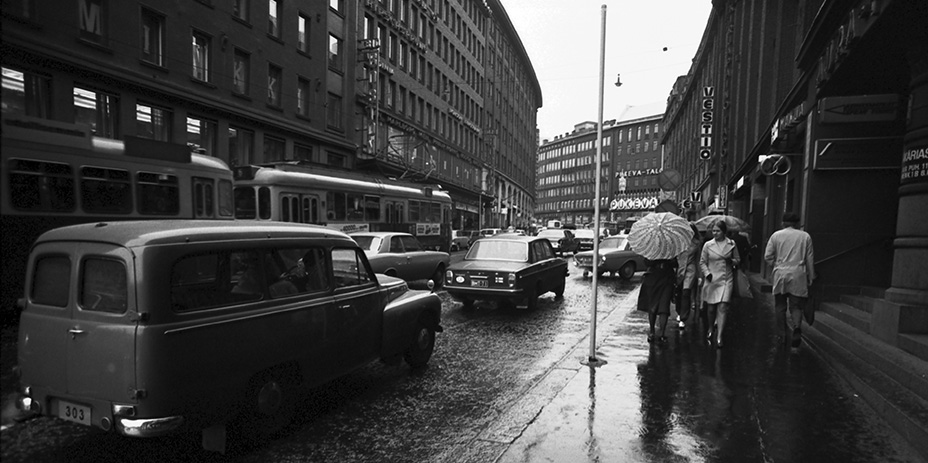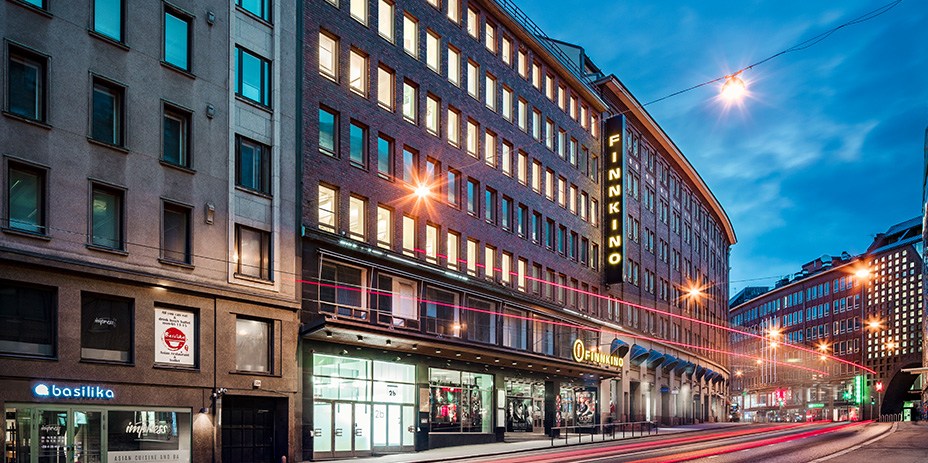
Kaisaniemenkatu 2b – a significant part of Helsinki’s cinematic history
Kaisaniemenkatu 2b is located in the Kluuvi district of Helsinki, in the Fennia block. The building designed by architect Niilo Kokko was completed in 1938. Since its completion, the building has served as commercial premises, with the cinema Bio Metropol among its first occupants.
Located in the heart of Helsinki, Kaisaniemenkatu has been one of the city’s busiest and most significant shopping streets and transport routes for decades. Over the decades, the facades of Kaisaniemenkatu 2b have witnessed many changes in the cityscape and film culture alike.
Architectural masterpiece from the 1930s
Designed by architect Niilo Kokko, the Kaisaniemenkatu 2b building was completed in 1938. The building is a beautiful example of the functionalist architecture, which was a popular style in Finland and elsewhere in Europe in the 1930s. Functionalism emphasises practicality, efficient use of space, clean lines and avoidance of unnecessary decoration.
The building’s original purpose was to serve as a business building. One of the building’s most famous original tenants was the cinema Bio Metropol, which opened its doors soon after the building was completed.

From Bio Metropolis to Kinopalatsi
Bio Metropol was part of Helsinki’s vibrant film culture, and its history spanning several decades is eventful. Metropol, later known as Boston and Formia, faced serious challenges in the 1990s, when many traditional cinemas in Helsinki had to close their doors. However, 1998 marked the start of a new chapter in the cinematic history of Kaisaniemenkatu with Finnkino’s Kinopalatsi starting operations in the building. Kinopalatsi introduced the multi-screen concept that met the needs of a changing consumer culture, offering a wide range of films and the capacity for greater visitor numbers. This change marked a new era in Finnish cinema culture.
Helsinki’s bustling shopping street and transport route through the decades
Kaisaniemenkatu has been a significant shopping street and transport route in Helsinki for more than a hundred years. It was built between 1916 and 1920 at the suggestion of architect Eliel Saarinen to facilitate traffic towards the north. When the street was originally built through the existing city blocks, it was known as Murtokatu, but the name was changed to Kaisaniemenkatu, after Kaisaniemi park, as early as 1915.
From the 1960s to the 1980s, Kaisaniemenkatu was known especially for its clothing stores. The street was one of the hubs of commercial life in Helsinki. To this day, Kaisaniemenkatu remains a vibrant street, with the University of Helsinki’s buildings, along with business premises and restaurants, located along it.
Today, Kaisaniemenkatu 2b is as a modern office and commercial property. The building has remained a significant feature of Helsinki’s cityscape, serving as a good example of the commercial construction of the 1930s. Although it has experienced changes and modernisations, its original functionalist look is still recognisable.

